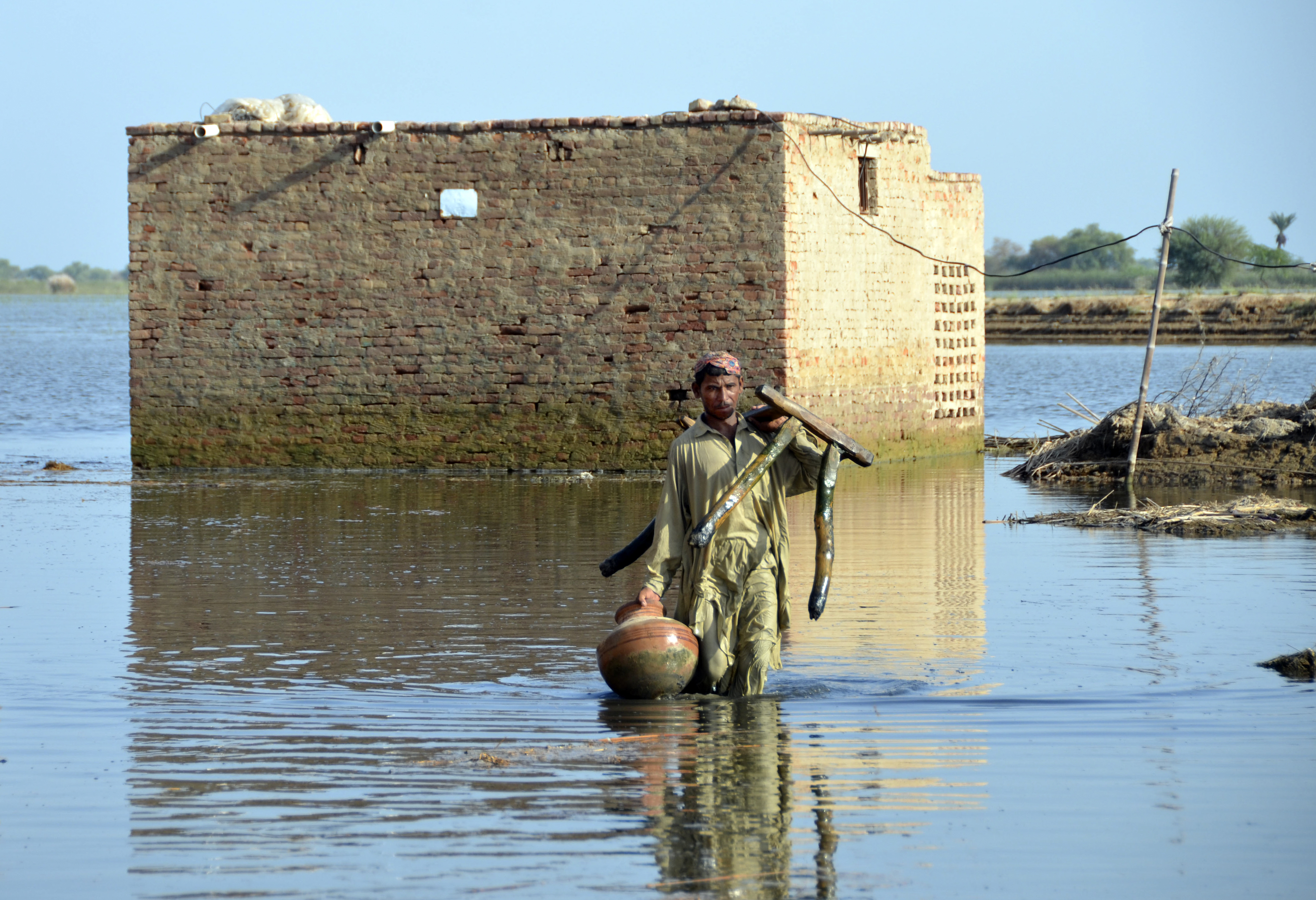
Islamabad, Pakistan – A United Nations report on Pakistan’s devastating floods says more than 240,000 people in the southern province of Sindh remain displaced while satellite images indicate about eight million are “still potentially exposed to floodwaters or living close to flooded areas”.
According to the situation report by the UN’s Office for the Coordination of Humanitarian Affairs (OCHA), released on Tuesday, at least 12 districts continue to report standing water, 10 of which are in Sindh and two in Balochistan.
Pakistan witnessed catastrophic floods this summer after heavy monsoon rains and melting glaciers submerged one-third of the country, killing more than 1,700 and affecting a total of 33 million people.
Houses, roads, bridges and rail networks were washed away, with the government estimating the total damage at more than $30bn.
The UN report says while receding water has allowed millions to return home, they continue to face acute shortages of essential items such as food and medicine. It adds that the flood-hit regions are now tackling health-related challenges, though the numbers are showing a declining trend.
Citing data from the World Health Organization (WHO), the UN report said cases of malaria have declined by 25 percent in Balochistan, 58 percent in Khyber Pakhtunkhwa and 67 percent in Sindh since early September.
The report added that a high number of malaria and cholera cases are still being reported from Sindh and Balochistan provinces, highlighting the “underlying vulnerabilities” in those regions.
The UN report further said more than 600,000 children in Pakistan have not received a single polio vaccine because of a lack of access to areas devastated by the floods. Pakistan remains one of the two countries in the world, along with Afghanistan, that is yet to be declared polio free.
The report also highlighted the food security situation in Pakistan. Quoting figures from the World Food Programme (WFP), another UN body, it said the highest food-insecure population was recorded in Sindh (3.9 million) and Balochistan (1.6 million).
“Evidence from available data indicates that relief response to date has fallen well short of the need, with over 5.1 million people now experiencing IPC 4 conditions in flood-affected areas,” it said, adding that an additional 1.1 million could fall in the same category by early 2023.
The IPC acute food insecurity classification differentiates between different levels of food insecurity, with phase four denoting an emergency and five being a catastrophe or famine.
Farida Shaheed, a former Special Rapporteur for OCHA and an expert on rights-based development, told Al Jazeera the government’s emergency response after this year’s floods lacks a long-term approach.
“The scale of devastation is massive. It is not something that can be fixed in months or a year. People have lost their homes, their crops, their livestock, their means of livelihood. I have not seen anything by the government that is being done with a long-term approach,” she said.
“Perennial issues were accumulating and now they are all here. Devastation due to floods is far beyond the scope, but it was all a long time coming. Our development policies were not effective and we can now see the results.”







